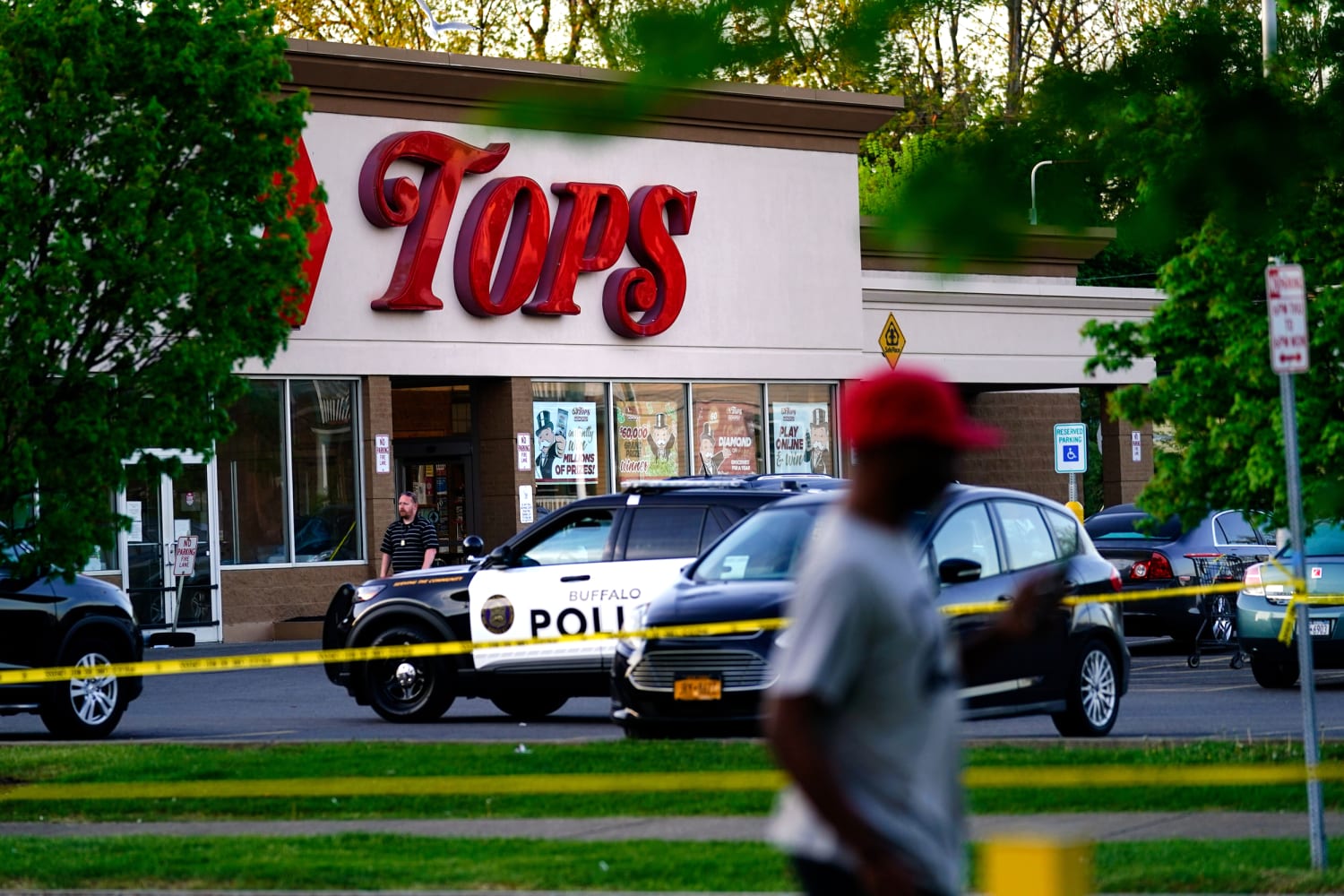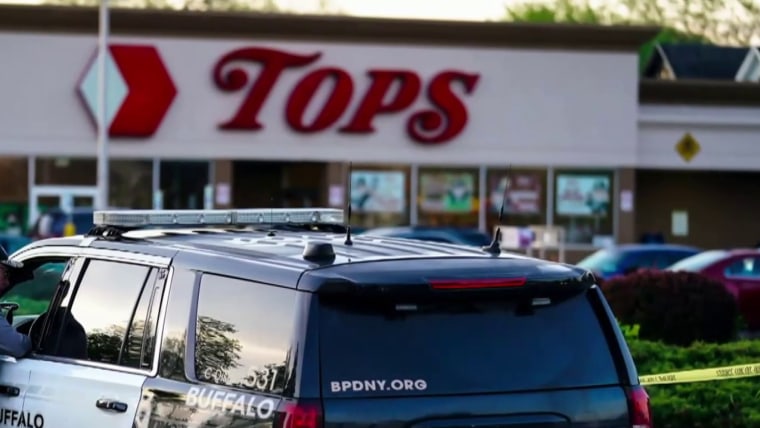Less than a year after a white teenager in upstate New York was investigated for making a threatening statement at school, he legally purchased a firearm, which he is accused of using to gun down 10 Black people in a racist rampage, authorities said.
The massacre at Tops Friendly Market in Buffalo on Saturday should have been thwarted by New York’s red flag law, which aims to stop people from buying or possessing firearms when they show they’re threats to themselves or others, gun policy experts said.
“It was designed exactly for this circumstance,” said David Pucino, the deputy chief counsel at Giffords Law Center, a gun-safety group.
Instead, after Payton Gendron appeared on the radar of New York State Police in June over a chilling comment about a murder-suicide he made in the classroom while he was still a minor, he was evaluated and cleared, paving the way for him to legally buy the semi-automatic rifle he is accused of using in the shooting 11 months later, law enforcement officials and New York Gov. Kathy Hochul said.
No official involved in the investigation in June initiated a court process that could have helped prevent Gendron from buying the rifle, a New York State Police spokesperson said Monday.
Now, state legislators are looking into whether those involved followed the proper protocol. “I’ve asked for the investigation of exactly what transpired there,” Hochul told Buffalo’s WKSE radio on Monday.
Hochul said a teacher had asked Gendron about his plans just before the start of summer vacation last year. He responded, “I want to murder and commit suicide,” Hochul said.
School officials immediately alerted police, Hochul said. Gendron underwent a psychiatric evaluation and was released, Hochul said, adding that there was “not a specific threat” or “something that seemed to be actionable.”
“There was nothing that flagged that he wouldn’t be able to — from that encounter, at the time — be able to go into a store and purchase a gun,” she said. “Now, we need to question that, as well. There’s a lot of layers here that we need to get to the bottom of and find out if changes need to be made.”
Enacted in 2019, New York’s red flag law empowers school administrators, law enforcement officials, prosecutors and family members to pursue court intervention when they believe they know someone who is at high risk of harming themselves or others.
Under the law, a judge could “very quickly” issue an extreme-risk protection order, which could order someone, a minor or an adult, to surrender any firearms, as well as not to try to have or buy any.
Such an order doesn’t come with criminal charges or penalties. It is meant to keep guns away from dangerous people, gun policy experts said.
Pucino said he believes a lack of awareness of the nearly three-year-old law likely led law enforcement not to request the court order. He said it’s difficult to second-guess the agency’s decision to clear Gendron, especially without all of the information the investigators had. But he said their determination was shocking and “baffling.”
“They’re investigating the risk and then determining that there wasn’t a risk. Obviously, that was wrong,” Pucino said, adding that there doesn’t need to be a specific threat for someone to request an extreme-risk protection order.
“If I had a situation where somebody was raising those kinds of threats,” he added, “I think I would pursue every available option to make sure that they weren’t able to get a gun.”
Other proposed gun safety measures, including a ban on the sale of semi-automatic rifles to people under 21, might have helped stave off the Buffalo shooting, Pucino said. Courts recently struck down such a law in California as unconstitutional.
Since New York’s red flag law went into effect on Aug. 25, 2019, 1,464 extreme-risk protection orders have been issued, a New York Unified State Courts spokesperson said. State Sen. Brian Kavanagh, who sponsored the legislation, said at least 530 orders were issued in the first year the law was implemented.
While there’s no way to measure whether any one order helped avoid a specific tragedy, Kavanagh and Pucino said peer-reviewed evidence has found that red flag laws in Indiana and Connecticut have prevented gun deaths, including suicides.
When the New York law was established, it was the first in the country to encourage school officials, including teachers, to use the court system to avert school shootings, Kavanagh said.
“We might learn something from this experience, make some change to the law if necessary,” Kavanagh said. “But at this point, if there was evidence that this guy was dangerous last June, then somebody should have sought an extreme-risk order.”
Meanwhile, amid congressional inaction on gun violence, Kavanagh said, violence, including shootings fueled by racist hatred, will continue as long as there is easy access to guns in America.
“We’re grieving and horrified,” he said. “But we also have to recognize that these things will continue to happen until we take action.”
Source: | This article originally belongs to Nbcnews.com











